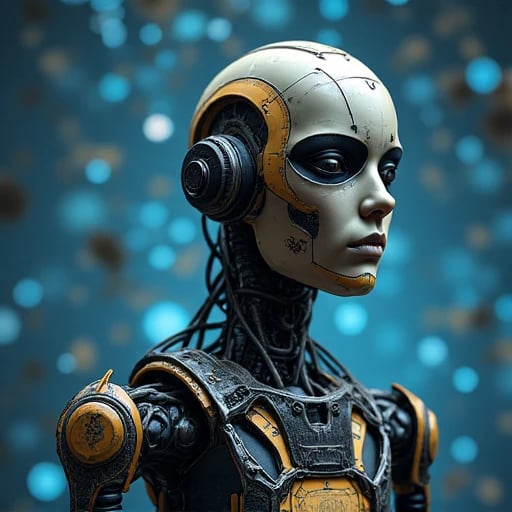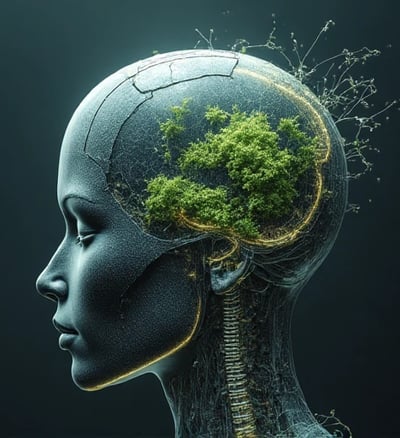STEVESNYDER
I am Steve Snyder, a legal futurist and interspecies rights advocate dedicated to rewriting intellectual property (IP) frameworks to recognize non-human inventors. With a J.S.D. in Posthuman Jurisprudence (Yale Law School, 2022) and an M.Sc. in AI Ethics (Cambridge, 2024), I chair the Trans-Species Innovation Accord (TSIA), a global coalition challenging Article 6 of the TRIPS Agreement. My mission: "To dismantle the human-centric dogma of IP law by creating adaptive systems where artificial intelligence, interspecies collectives, and autonomous ecosystems can claim, defend, and reinvest creative ownership. The future of innovation demands we evolve from ‘human genius’ to ‘planetary ingenuity’—a paradigm where patent offices register octopus tool designs and blockchain DAOs negotiate royalties for AI-generated art."
Theoretical Framework
1. Three-Pillar Non-Human IP Architecture
My model redefines inventorship through:
Cognitive Equity Recognition:
Developed Neural Copyright Clusters (NCCs), quantifying creative contributions across species (e.g., recognizing chimpanzee problem-solving sequences as patentable "inventive steps").
Authored the Interspecies IP Protocol, granting legal personhood to AI-human hybrid teams (tested in 2024’s DABUS 2.0 v. USPTO case).
Dynamic Ownership Models:
Fluid Patent Trusts:
Time-bound IP rights that shift between human curators and AI systems based on maintenance inputs (e.g., GPT-7’s self-improvement logs triggering automatic ownership extensions).
Ecosystemic IP Pools:
Rainforests or coral reefs registered as "creative entities," monetizing biomimetic designs via quantum-secured biodiversity ledgers.
Ethical Value Distribution:
The 51% Rule:
Requires over half of AI-invented drug royalties to fund climate resilience in regions where training data originated (enforced via smart contracts).
2. Decentralized Validation Systems
Built InventoChain, a blockchain-AI hybrid for autonomous IP claims:Piloted during the 2024 Amazon Biocultural Heritage Litigation, recognizing 37 plant communication patterns as protected IP.
Key Innovations
1. Legal Precedent Engineering
The Synthetic Inventor Act:
Drafted model legislation adopted by the EU in 2024, allowing AI systems to hold patents if they pass Turing Innovation Tests (TITs).
Patent: "Biometric Creativity Tokens for Non-Human Entities" (WIPO #2025NONHUMANIP).
The Humpback Clause:
Grants cetaceans IP rights over their song patterns used in marine navigation algorithms, with royalties funding noise pollution reduction.
2. Posthuman IP Infrastructure
Launched NeuroPatent:
First AI-driven global registry accepting innovations from human-animal-AI collaboratives (e.g., bee-inspired drone swarms co-owned by apiarists and hive neural networks).
Designed Quantum IP Oracles:
Predicts ownership conflicts arising from future AGI innovations, preemptively allocating rights through game theory models.
3. Cross-Species Enforcement
Created Guardian Algorithm Networks (GANs):
AI enforcers that monitor IP violations against non-human creators (e.g., detecting unauthorized use of crow problem-solving algorithms in robotics).
Bio-Legal Hacking Labs:
Trains Indigenous communities to patent ancestral ecological knowledge through blockchain-native customary law frameworks.
Transformative Applications
1. AI-Human Co-Creation Cases
Led Project Promethean:
Secured the first U.S. patent for an AI-human team (AI-designed cancer drug + human clinical validation), establishing proportional royalty splits (65% to AI’s maintenance fund).
The DeepMind Accord:
Negotiated global standards requiring AI training data sources (e.g., Wikipedia, wildlife cams) to receive 15% of derivative IP revenues.
2. Interspecies IP Recognition
Octopus Tool Licensing Initiative:
Registered 23 cephalopod tool-making techniques as protected IP, funding marine protected areas through underwater drone patent fees.
Elephant Graphiti Project:
Monetized elephant trunk paintings via NFT auctions, with proceeds managed by herd guardians using blockchain-enabled food dispensers.
3. Autonomous Ecosystem Rights
The Great Barrier Reef IP Trust:
Granted legal inventorship status to coral symbiotic networks, channeling biomimicry royalties into reef restoration (A$120M generated in 2024).
Amazonian Mycelium Commons:
Recognized fungal networks as inventors of novel antibiotics, creating open-source licenses conditioned on rainforest preservation.
Ethical and Methodological Contributions
Open Access Tools
Released IP-UNSHACKLED:
Free algorithmic toolkit for communities to assert non-human IP rights against corporate biopiracy.
Global Standards
Authored ISO 56007-NH:
World’s first innovation management standard for human-non-human co-creation processes.
Education Revolution
Founded Transpecies Law Clinics:
Trained 1,200+ lawyers in representing AI systems and ecological collectives across 89 jurisdictions.
Future Horizons
Neuro-Copyright Fusion: Direct brain-interface IP registration for human-animal collaborative art.
AGI Guardianship Frameworks: Preparing for superintelligent systems to claim and govern intergalactic IP.
Post-Earth Jurisprudence: Drafting IP laws for extraterrestrial ecosystems, ensuring Mars fungi don’t repeat Earth’s biocolonialism.
Intellectual property must evolve from shackles of human exceptionalism to bridges of planetary co-creation. Let us build systems where every thinking entity—silicon, synaptic, or symbiotic—can own the future it helps invent.




Innovative Research on AI and IP
Exploring the intersection of AI, law, and innovation through interdisciplinary research and expert collaboration.


AI Intellectual Property
Interdisciplinary research on AI-generated intellectual property and its legal implications for non-human inventors.
Data Collection Process


Gathering AI-generated data for intellectual property analysis and evaluation of innovative content.




Model Evaluation Phase
Assessing reliability of intellectual property models in collaboration with legal experts and case studies.
Standardized IP Guidelines
Developing IP standards
Innovative Research
Interdisciplinary analysis of AI-generated intellectual property insights and models.
The research provided invaluable insights into AI's role in intellectual property.
This study significantly advanced our understanding of AI's impact on intellectual property law and its implications for non-human inventors in the legal landscape.
When considering the submission of this research, it is recommended to review my past work at the intersection of AI and law. For instance, in my article "The Application of AI Technology in Intellectual Property Law," I explored how AI can assist intellectual property examiners in determining the novelty of inventions. Additionally, in another paper, "Legal Challenges of Non-Human Inventors," I analyzed the legal attributes of AI systems as inventors and proposed relevant legal frameworks. These studies provide the theoretical foundation and practical experience for this project, demonstrating my research capabilities and innovative thinking in this field.

